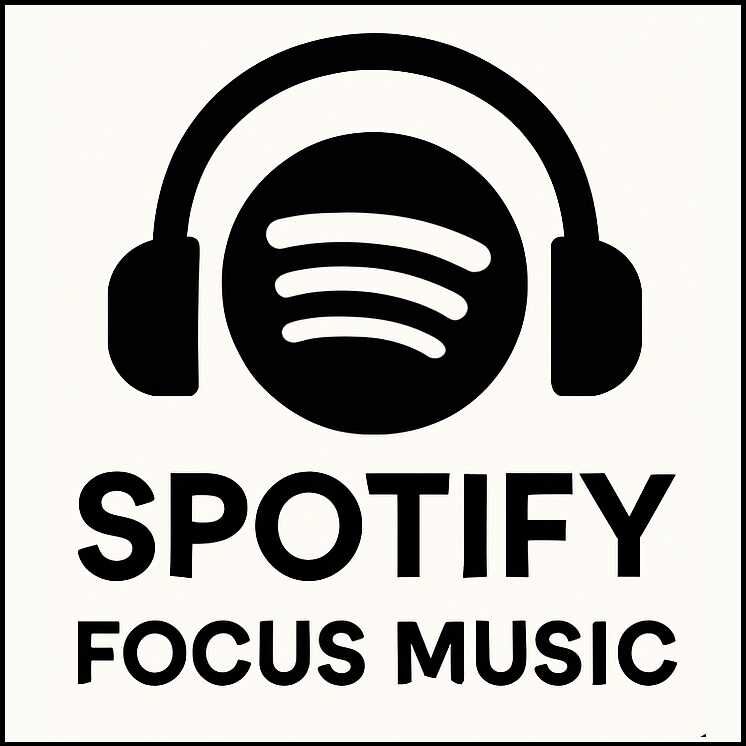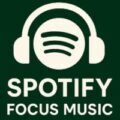“In a world of distraction, sound can either drown your thoughts — or guide them.”
Introduction: The Quiet Power of Sound
Work today is a paradox. We live in the most connected age in history, yet our attention is scattered. Slack pings, background conversations, keyboard clicks, phone vibrations — all colliding with our to-do lists and thinning concentration.
But where chaos reigns, music offers a lifeline.
Focus music is not just background sound. It is a subtle tool, a carefully selected atmosphere that helps the brain switch gears — from reactive mode to proactive creation. It builds a bridge to flow. When chosen wisely, it becomes the rhythm of getting things done.
Chapter 1: A Brief History of Music in the Workplace
1.1. Industrial Soundscapes and the Origins of Music at Work
The idea of using music during work isn’t new. In the 1940s, during World War II, British factories played upbeat music through loudspeakers to boost morale and productivity. This initiative, called “Music While You Work”, was studied by psychologists and eventually adopted in various industries.
In the late 20th century, background music moved into offices, elevators, and even corporate training programs. But while “muzak” was intended to soothe, it often dulled the mind.
Today, the approach has changed: workers craft personal sound environments through headphones — not to escape work, but to enhance it.
1.2. Neuroscience of Attention and Sound
Modern neuroscience confirms what intuition has long suggested: music alters brain chemistry. It can:
-
Reduce cortisol (stress hormone)
-
Boost dopamine (linked to motivation)
-
Align brainwave frequencies with desired mental states
Specifically, alpha and low beta waves (8–20 Hz) correlate with focused alertness — ideal for analytical and creative tasks.
This is the scientific root behind binaural beats, lo-fi streams, and ambient mixes tailored for productivity.
Chapter 2: Best Genres of Focus Music for Work
2.1. Lo-fi Hip-Hop: A Gentle Urban Engine
Lo-fi music, with its nostalgic vinyl crackle, muted drums, and mellow melodies, has become a global productivity staple. It feels warm and non-invasive — like a quiet friend sitting beside you.
Perfect for tasks like:
-
Email sorting
-
Light design work
-
Writing and brainstorming sessions
Its steady rhythm helps regulate attention, while the lack of vocals avoids linguistic interference.
2.2. Ambient: Sonic Minimalism for Mental Clarity
Ambient music, pioneered by Brian Eno, is made not to be heard actively but to be present. Long drones, subtle textures, and slow harmonic shifts create an environment of calm alertness.
Ideal for:
-
Deep-focus writing
-
Problem-solving
-
Reading and planning
Ambient music helps dampen emotional noise, allowing ideas to surface more easily.
2.3. Classical & Baroque: Structured Beauty for Structured Tasks
Baroque music (Bach, Vivaldi, Handel) is rhythmically consistent and intellectually ordered. Many compositions hover around 60–80 BPM, matching a resting heart rate and promoting cognitive flow.
Useful during:
-
Data analysis
-
Project outlining
-
Task organization
Classical music, with its emotional neutrality and harmonic clarity, can also reduce background tension in busy office settings.
2.4. Minimal Techno & Downtempo Electronica
For long sessions of technical or repetitive tasks — coding, spreadsheet work, testing systems — minimalist electronic music provides energy without distraction.
Key features:
-
Driving but unobtrusive beats
-
Clean production
-
Hypnotic repetitions
Genres like downtempo, deep house, or future garage bring focus with a darker emotional edge, useful during late-night work sprints.
2.5. Binaural Beats and Brainwave Entrainment
Designed specifically to entrain the brain into focus states, these audio tools use subtle frequency differences between ears to nudge the brain toward alpha or low-beta rhythms.
While not “music” in a traditional sense, they are powerful when used:
-
In short bursts (25–50 minutes)
-
During creative blocks
-
For mental recovery between meetings
Chapter 3: Characteristics of Effective Focus Music
Not all music helps. In fact, much of it can harm productivity. The most effective focus music shares these traits:
| Characteristic | Why It Matters |
|---|---|
| No lyrics | Words compete with language-processing in the brain |
| Mid to slow tempo | Keeps heart rate and breath steady |
| Repetitive structure | Prevents surprises that grab attention |
| Subtle dynamics | No dramatic shifts that disrupt flow |
| Emotional neutrality | Avoids triggering strong feelings |
| Consistent tone color | Reduces cognitive switching |
Put simply: good focus music disappears. It doesn’t pull you in — it holds you steady.
Chapter 4: Music for Different Types of Work
4.1. Creative Work (Design, Writing, Innovation)
The challenge: merging intuition and logic.
Ideal genres:
-
Ambient
-
Downtempo electronica
-
Instrumental jazz
-
Solo piano improvisation
These styles foster divergent thinking and help ideas connect without constraint.
4.2. Analytical Work (Math, Finance, Logic)
The challenge: accuracy, sustained attention, and structured reasoning.
Ideal genres:
-
Baroque classical
-
Minimal techno
-
Lo-fi hip-hop (instrumental only)
-
Binaural beats (low beta range: 14–18 Hz)
The structure in the music supports structure in thought.
4.3. Routine Tasks (Admin, Sorting, Formatting)
The challenge: boredom and repetition.
Ideal genres:
-
Upbeat downtempo
-
Lo-fi with rhythm
-
World music instrumentals
-
Chillhop and jazzy background streams
These provide a pulse, encouraging momentum through mundane tasks.
4.4. Meetings and Collaborative Sessions
The challenge: creating a productive atmosphere for thinking, not talking over.
Ideal genres:
-
Ambient textures
-
Soft acoustic guitar
-
Instrumental soundtracks
These work well as background in shared spaces, subtly enhancing focus without dominating.
Chapter 5: Tips for Using Focus Music Effectively
-
Create music rituals. Always begin your work session with the same track or playlist. It becomes a neural cue, priming the brain for focus.
-
Use high-quality headphones. Especially in shared or open offices, this improves sound detail and reduces environmental distractions.
-
Match tempo to task. Slower tempos (60–80 BPM) suit reflection; moderate tempos (90–110 BPM) suit active execution.
-
Avoid vocals. They almost always reduce comprehension and working memory — even in languages you don’t understand.
-
Switch playlists across task types. This keeps your brain from tuning out completely and refreshes your attention pattern.
-
Take silent breaks. After every 60–90 minutes of focused work with music, take 5–10 minutes of silence or ambient sound to let your brain reset.
Chapter 6: Myths About Focus Music
❌ “Any music I like will help me focus.”
Music you love may evoke strong memories or emotions, pulling attention away from the task. Focus music should blend, not stand out.
❌ “Music makes everyone work better.”
Some people focus best in silence. Music is a tool — not a universal solution. The key is self-awareness.
❌ “Lyrics in another language don’t distract.”
Even unfamiliar words activate linguistic circuits. If deep focus is needed, stick with instrumentals or non-verbal textures.
Chapter 7: Curated Playlist Suggestions
Here’s a sample guide to create your own focus soundtrack:
| Task Type | Playlist Name Idea | Genre |
|---|---|---|
| Morning planning | “Coffee and Calm” | Piano, ambient |
| Writing focus | “Ink Flow” | Lo-fi, chillhop |
| Analytical work | “Logic Loop” | Baroque, minimal techno |
| Coding sprint | “Syntax Rhythm” | Downtempo, future garage |
| Night sessions | “Quiet Grind” | Ambient, dark electronica |
| Meetings | “Soft Space” | Guitar, ambient textures |
Conclusion: The Sound of Your Best Self
We often speak of productivity as something mechanical — time blocks, deadlines, apps. But behind it all lies a human mind: full of emotions, energy swings, and distractions.
Music speaks directly to that mind.
It aligns our tempo with intention, lifts us when we’re fading, and holds space for clarity when the world becomes too loud.
“Work is not only what we do, but how we feel while doing it. And music — when chosen wisely — transforms effort into flow.”
Whether you’re designing systems, crafting stories, solving equations, or simply powering through emails, the right music doesn’t just help you work — it helps you become the kind of person who gets things done.


